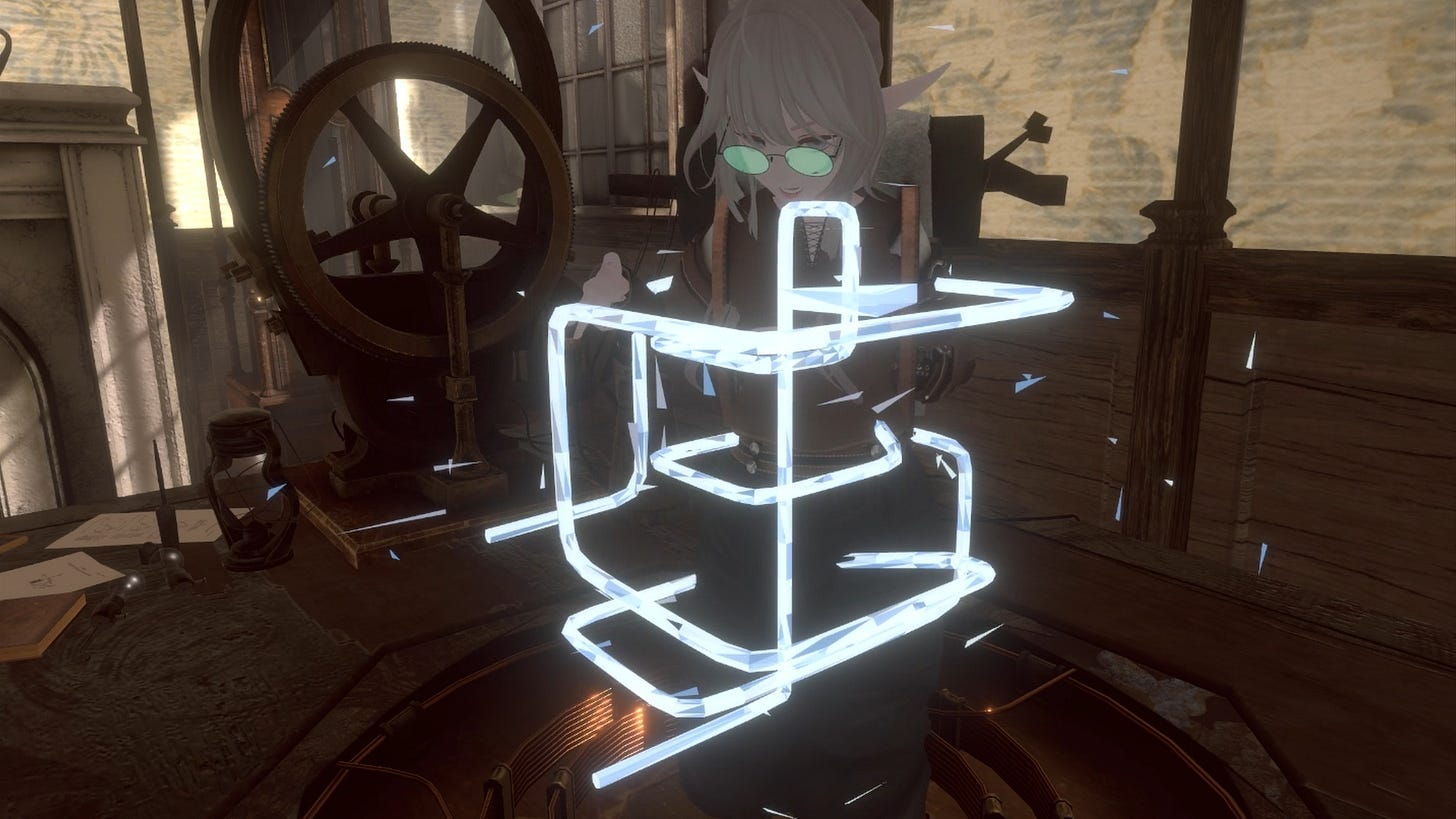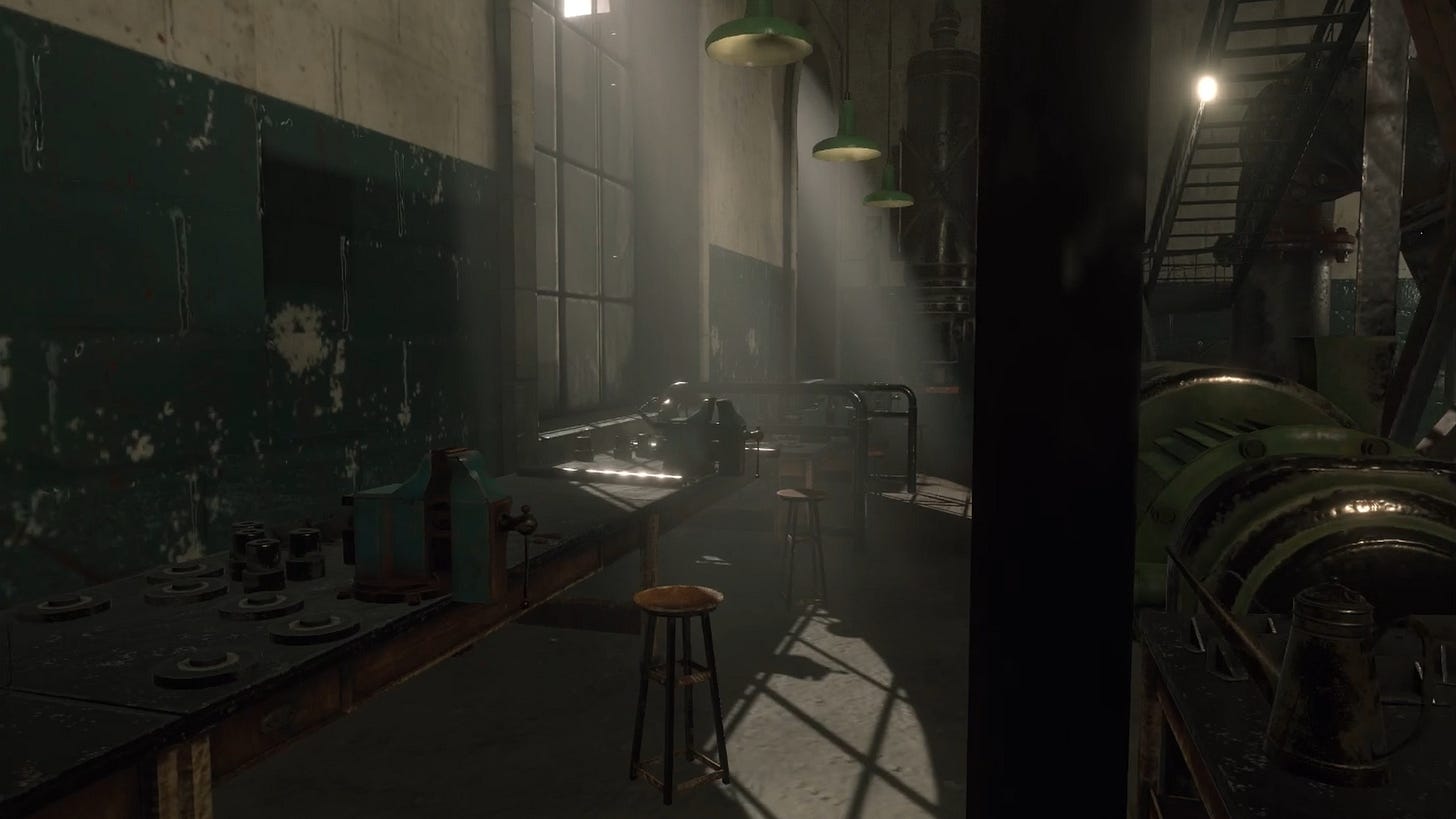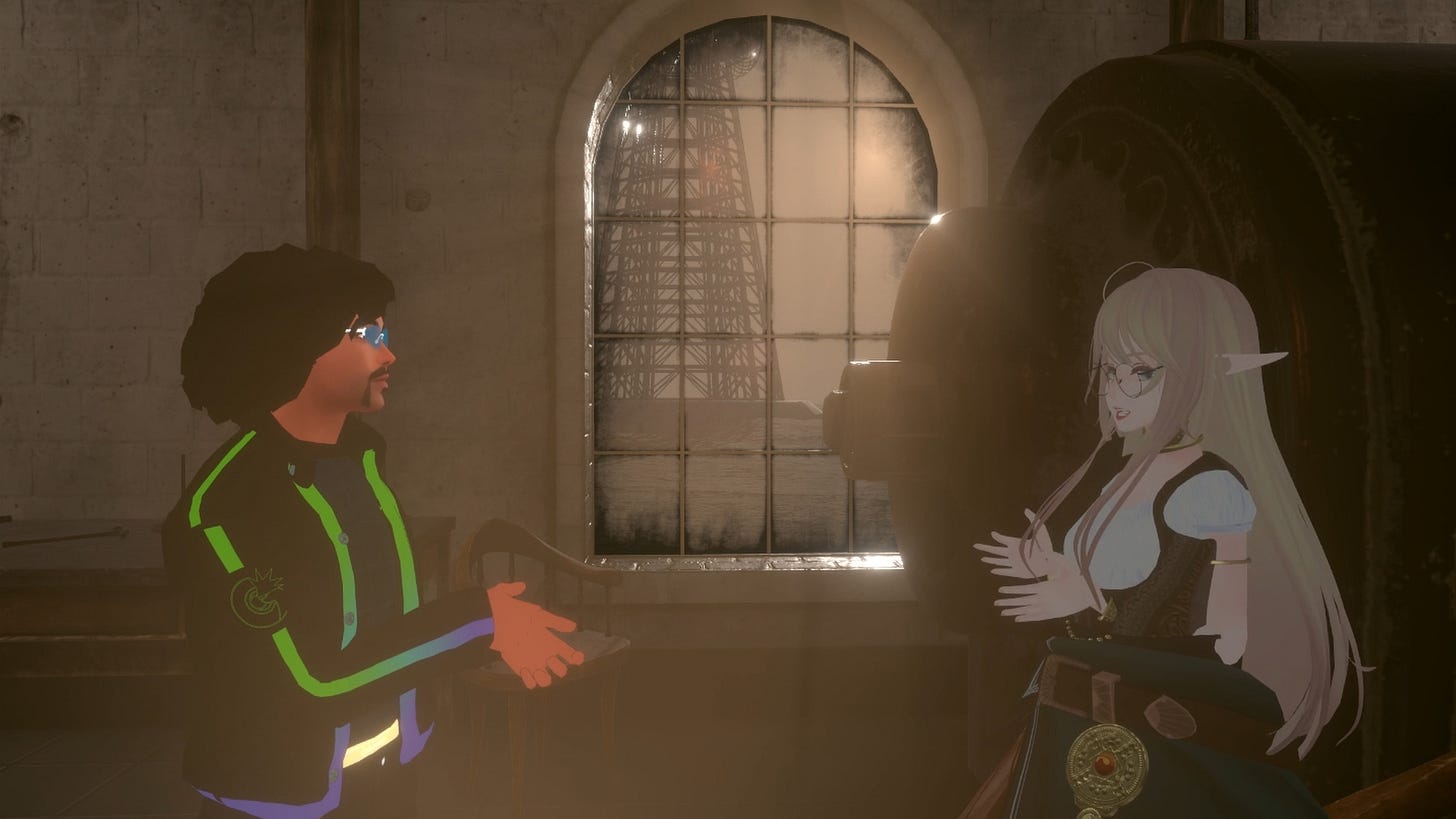ArmaniXR: For part two of this interview (previously held in partnership with the Glitches.VR Collective) I am fortunate to join FlowersRite花之祭P in The Great Inventor Escape, one of their multiple interactive worlds in VRChat…

: I'm thinking back to the themes of The Great Inventor Escape and how there’s…well I felt very inspired, personally. I really enjoyed how you chronicled Nikola Tesla’s life like that and also just the story, being able to interact with that. The interactions kind of helped embody the story.
Have you met any users in China that have explored your worlds or are you able to say more about how they are overcoming different yet, similar obstacles like some in your worlds?
I think it's really interesting because I have met some Chinese players in VRChat. Apparently in China, it's technically illegal to play VRChat because they try to ban all the media where you can interact with people outside of China. But yeah, people are still playing it basically. That's how I met them. Also, on Bilibili, if you are uploading a video, you have to have your video reviewed by the website. If they see VRChat in your title, they won't accept it. So it's kind of hard for Chinese people to get into the realm of social virtual reality. It's kind of a tough situation in China.
How much, in your opinion, of Chinese culture makes it into VRChat in worlds and the avatars that you've seen?
From what I've seen, Chinese players are actually really creative and they really want to share Chinese culture to the rest of the world. There's a VRChat world I've seen about all the Chinese memes on the Chinese internet. They actually put so much effort into making the world and they actually archived all the memes into different categories in a way that you actually feel like you're in a museum when you enter the world. I was really amazed when I visited it. Yeah, that was really something that I didn't expect from Chinese players since they don't even have official access to VRChat. Also, since I am from China before I came to Canada, I also really want to showcase what we have in China and all the cultures we have. But that's why I made a few worlds that are actually based on Chinese culture: Purify, Obsession, and also Beijing Streets 西锣鼓巷.
In general, how do you manage ideas and put them into worlds or leave them out if they get in the way of the story?
At the beginning, when I started making worlds, I used a lot of other assets from the Unity Store or just anywhere from the internet. I would just build the basic architecture and buildings and stuff myself. Then I would just put other assets in there. But the entirety of the production is all done by myself. I was basically doing the job an environment artist does. As time went by and I learned more stuff, I started to build basically all the assets you see in the world. For example, here in The Great Inventor Escape, all the matches you see were modeled by myself in Blender. But yeah, I just started to make everything myself, including music as well. The one thing I can't really do is the coding part. I'm not really a technical person. So when it comes to triggers or coding, I can't really do anything about it. I use a Unity compiler called Cyan Trigger to help me write all the triggers and stuff. But other than that, I tend to make everything myself. And as for the ideas, I would just type my ideas down on my phone whenever I have an idea, compile them later on my PC, and create a Word document for it.
I normally have a Word document with all the ideas of what I actually want to put in the world. Then I make another Word document with all the lore and stories in the world. Sometimes I also have an Excel sheet for all the events that will happen in the world to help me keep track of all the complicated events and stories. Because when it comes to an experience world like The Great Inventor Escape, because there's so many things happening, I needed an Excel sheet for every single event and what triggers what. And also a sheet for all the voiceovers with all of the lines that voice actors do. When it comes to music ideas, I would just record my motifs on piano when I have a melody in my head. If there's no piano around me, I would just open up GarageBand on my phone and start recording on my phone. Because musical ideas are really not forgiving. If I don't record them right away, they will just disappear in seconds and they will never come back.
With worlds and experiences as intricate as yours, how do you determine or reach a point where you are satisfied with what you have created and you don’t feel the need to make updates?
I actually always have a vision of what the finished stage looks like. I never publish any work-in-progress work and I rarely even show people my unfinished projects before I'm like 99% done. As I'm working on the project, my vision will just get more and more clear. That being said, I don't really rely on publishing updates. The only updates I make would be related to the feedback that I receive from people, whether it be the requested extra features or maybe reported bugs as well. But yeah, I rarely change the core of a project in the update.

What general advice do you have for newer social VR world builders?
I guess I'll just go straight to the point and give the most practical advice. First of all, don't be afraid to learn Blender. It's actually really beginner-friendly. You will learn how to make a house in just a few hours. And you'll be surprised how easy it is. Also, get the Bakery GPU Lightmapper from the Unity Store. And then learn light baking. It generally brings so much more depth in your world and will make your scene so much more polished. And if you bake your lights. But yeah, I'd say Blender and Bakery are basically all you need to start your world building journey. Don't be afraid to give it a try.
Besides Blender and Bakery, I guess you can also get Substance Painter, which you use to make textures. It's really useful because it actually calculates the curvature of the mesh. And then you can generate edge wear, moss, or dirt and make it look really organic and natural. Yeah, Blender for modeling and Substance Painter for texturing. If you want to go to the next level, you can also try Substance Designer, where you can actually create the texture procedurally. But if you're just a beginner, you can just use Blender, Substance Painter for texturing, and also Bakery GPU Lightmapper for light baking in Unity.
What advice do you have for anyone interested in performing music in their worlds or in VR in general?
Yeah, I'm actually pretty new to music performing as well in VR, so I can't really say too much about it. However, I think there are more ways you can show off your music in VR. There are so many ways you can show off your music in VR. And it doesn't have to always be a concert or a club scene. The possibilities are infinite in VR, so don't be afraid to discover them and try things out. Try to take advantage of VR and think about what you can achieve in VR, not just in real life or flat-screen video. This is what I would explore and exercise in my art as well.
Lastly, can you tell our audience about any future projects you’re working on? How can our audience stay updated on that?
I have way too many projects at the moment, and I'm actually trying to decide which project I should be working on. I'm thinking about two projects that I'll be prioritizing. The first one is an old world that I've been remaking. I can't really say what it is, but I'm really excited for it. Another one is a horror map with a storyline in it. I'm currently just writing the story and the scripts. I've also done a little bit of modeling, but yeah it's still at the beginning stage. I can't say when on it...but if I have any updates, I will be sure to post them on my X account and Bluesky account.




